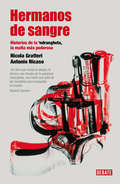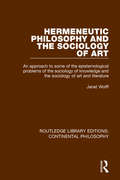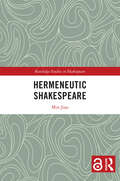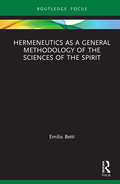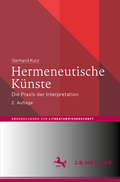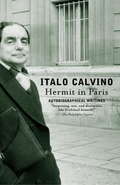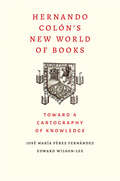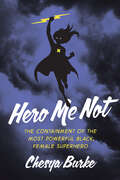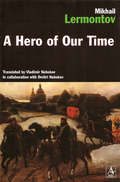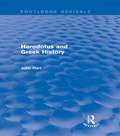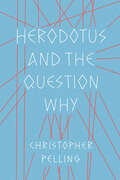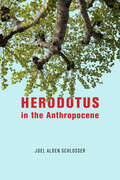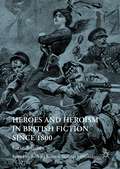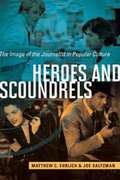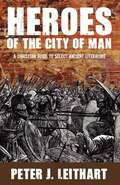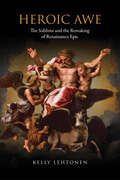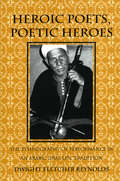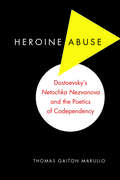- Table View
- List View
Hermanos de sangre: Historias de la 'Ndragheta la mafia más poderosa
by Nicola GratteriLa extraordinaria reconstrucción del universo criminal de la 'Ndrangheta', la mafia más poderosa y desconocida. La 'Ndrangheta calabresa siempre ha sido infravalorada, considerada un fenómeno criminal menor, casi folclórico. Solo sale a la luz pública en momentos de sanguinaria celebridad, como ocurrió en Duisburgo (Alemania) en 2007, en un salvaje ajuste de cuentas en el que murieron seis personas. Crecida y fortalecida en el silencio, tiene hoy ramificaciones en todas las regiones italianas y en los cinco continentes y contactos con las principales organizaciones terroristas y criminales del mundo. Nicola Gratteri y Antonio Nicaso son los mayores expertos mundiales sobre esta organización criminal, cuya evolución no ha anulado los antiguos rituales, que han sido readaptados, pero nunca descartados. Una liturgia en la que conviven el arcángel san Miguel y mitos ancestrales, invocaciones improbables al Evangelio y a la religión cristiana, y pintorescos rituales de iniciación centrados en el protagonismo del «vínculo de sangre». Un universo simbólico que puede parecer extraño e incluso delirante, pero que resulta muy útil para conservar una sola identidad en cualquier lugar y ocasión. Gratteri y Nicaso han logrado una extraordinaria reconstrucción de la historia y la atmósfera de un universo criminal de asombroso alcance y brutalidad. Reseñas:«El libro que revela la sangre, el dinero y los rituales de la poderosa 'Ndrangheta, una mafia que salió de las montañas para conquistar el mundo.»Roberto Saviano «La obra máxima, la piedra angular de lo que concierne a la 'Ndrangheta y su escalada al poder mundial de las organizaciones criminales.»Benny Calasanzio Borsellino
Hermanos de tinta
by Nahum MonttEs el año de 1605, y España se prepara para ?rmarla rati?cación del tratado de paz con Inglaterra, luegode casi veinte años de guerra. Más de 500 inglesesllegan a Valladolid con motivo de las celebraciones.Con este hecho histórico como telón de fondo,Nahum Montt narra el encuentro entre dos hermanosde tinta: Miguel de Cervantes y WilliamShakespeare.Cervantes pasa di?cultades como comisario enValladolid y Shakespeare llega con la delegacióninglesa y su compañía de teatro. Uno y otro gozande cierto reconocimiento, pero el encuentro no lopropiciará la fama sino el infortunio.Una novela en donde la realidad y la ?cción tejen unrico entramado de intrigas, de aventuras y desencuentrosentre estos dos personajes, que sumergen al lectoren una atmósfera turbulenta recreada con talento.«¿Qué podía tener en común él, unaventurero español que había sido de todo enla vida: prófugo, soldado, cautivo, comisarioy autor de comedias y novelas# qué podíatener en común él con un dramaturgo inglésllamado William Shakespeare?».
Hermaphrodites in Renaissance Europe (Women and Gender in the Early Modern World)
by Kathleen P. LongKathleen Long explores the use of the hermaphrodite in early modern culture wars, both to question traditional theorizations of gender roles and to reaffirm those views. These cultural conflicts were fueled by the discovery of a new world, by the Reformation and the backlash against it, by nascent republicanism directed against dissolute kings, and by the rise of empirical science and its subsequent confrontation with the traditional university system. For the Renaissance imagination, the hermaphrodite came to symbolize these profound and intense changes that swept across Europe, literally embodying these conflicts. Focusing on early modern France, with references to Switzerland and Germany, this work traces the symbolic use of the hermaphrodite across a range of disciplines and domains - medical, alchemical, philosophical, poetic, fictional, and political - and demonstrates how these seemingly disparate realms interacted extensively with each other in this period, also across national boundaries. This widespread use and representation of the hermaphrodite established a ground on which new ideas concerning sex and gender could be elaborated by subsequent generations, and on which a wide range of thought concerning identity, racial, religious, and national as well as gender, could be deployed.
Hermeneutic Philosophy and the Sociology of Art: An Approach to Some of the Epistemological Problems of the Sociology of Knowledge and the Sociology of Art and Literature (Routledge Library Editions: Continental Philosophy #4)
by Janet WolffThis book, first published in 1975, is an examination of the theoretical foundation of the sociology of art and literature and an in-depth study in the sociology of knowledge. In discussing and clarifying some of the important philosophical issues in this field, the constant underlying reference is to the creative and artistic-expressive areas of knowledge – so that the better understanding of the social nature and genesis of all knowledge may point the way towards a similar comprehension of art and society.
Hermeneutic Shakespeare (Routledge Studies in Shakespeare)
by Min JiaoThis volume takes a deep dive into the philosophical hermeneutics of Shakespearean tradition, providing insight into the foundations, theories, and methodologies of hermeneutics in Shakespeare. Central to this research, this volume investigates fundamental questions including: what is philosophical hermeneutics, why philosophical hermeneutics, what do literary and cultural hermeneutics do, and in what ways can literary and cultural hermeneutics benefit the interpretation of Shakespearean plays? Hermeneutic Shakespeare guides the reader through two main discussions. Beginning with the understanding of "Philosophical Hermeneutics", and the general principles of literary and cultural hermeneutics, the volume includes philosophers such as Friedrich Ast, Daniel Friedrich Schleiermacher, and Wilhelm Dilthey, as well as Ludwig Wittgenstein, Martin Heidegger, Hans-Georg Gadamer, and more recently, Steven Connor. Part Two of this volume applies universal principles of philosophical hermeneutics to explicate the historical, philosophical, acquired, and applied literary interpretations through the critical practices of Shakespeare’s plays or their adaptations, including Henry V, The Merchant of Venice, Hamlet, and The Comedy of Errors. Aimed at scholars and students alike, this volume aims to contribute to contemporary understanding of Shakespeare and literature hermeneutics. Chapters 2, 5, and 6 of this book are available for free in PDF format as Open Access from the individual product page at www.routledge.com. They have been made available under a Creative Commons Attribution-Non Commercial-No Derivatives 4.0 license. Funded by Guangdong University of Foreign Studies.
Hermeneutics as a General Methodology of the Sciences of the Spirit (Law and Politics)
by Emilio BettiWith a Foreword by Lars Vinx, this book is the first complete English translation of the Italian jurist, Emilio Betti’s classic work Die Hermeneutik als allgemeine Methodik der Geisteswissenschaften, originally published in 1962. Betti’s hermeneutical theory is presented here as a ‘general methodology of the sciences of the spirit’, such as to allow the achievement of objectivity, however relative it might be. Its central focus is the tension between an object, to be considered in its autonomy, and the subjectivity of the interpreter, who can understand the object only by means of his or her own categories, historical-cultural conditions, and interests. Set against the work of Bultmann and Gadamer, Betti is concerned to limit the arbitrariness of subjectivity without diminishing the place of interpretation. Detailing the principles that govern, and therefore, guide any interpretation, Betti traces how interpretation in art and in literature, as well as in the fields of science, jurisprudence, sociology, and economy, can be said to be objective, albeit only ever in a relative sense. This summa of Betti’s key contribution to hermeneutic theory will be of interest across a range of disciplines, including legal and literary theory, philosophy, as well as the history and sociology of law.
Hermeneutische Künste: Die Praxis der Interpretation (Abhandlungen zur Literaturwissenschaft)
by Gerhard KurzWir interpretieren nicht nur Texte und haben dafür eine besondere „hermeneutische Kunst“ (Schleiermacher) entwickelt, sondern wir interpretieren auch die Welt um uns. Die Untersuchung geht der Frage nach, welche expliziten und impliziten Regeln in der Praxis der Interpretation angewandt werden. Der erste Teil klärt u.a. den Begriff der Interpretation, das Verhältnis von Lesen und Interpretieren und analysiert die traditionelle Metaphorik der Interpretation. Im zweiten Teil werden Paradigmen der Interpretation untersucht: die mantische Deutung von Orakeln und Träumen, die philologische Interpretation literarischer Texte, die alltägliche Deutung einer Physiognomie und die kriminalistische Deutung von Spuren. Im Horizont von Rhetorik, Philologie und Hermeneutik werden in den folgenden Kapiteln antike, mittelalterliche und neuzeitliche, jüdische und christliche Interpretationslehren und danach die neuzeitliche Entwicklung der Hermeneutik als Wissenschaft behandelt. Das Abschlusskapitel fasst Regeln der Interpretation von Texten zusammen.
Hermit in Paris
by Italo CalvinoFrom one of modern literature's most captivating and elusive masters comes a posthumous volume of thoughtful, elegant, and quick-witted autobiographical writings, all previously unpublished in English. Here is Italo Calvino paying homage to his literary influences and tracing the evolution of his signature style. Here are his reminiscences of Italy's antifascist resistance and the frenzy of politics and ideas of the postwar era. The longest and most delightfully revealing section of the book is Calvino's diary of his travels in the United States in 1959 and 1960, which show him marveling at color TV, wrinkling his nose at the Beats, and reeling at the outpouring of racial hatred attending a civil rights demonstration in Alabama. Overflowing with insight and amusement, Hermit in Paris is an invaluable addition to the Calvino legacy.From the Trade Paperback edition.
Hernando Colon's New World of Books: Toward a Cartography of Knowledge
by Edward Wilson-Lee Jose Maria Perez FernandezThe untold story of the greatest library of the Renaissance and its creator Hernando Colón This engaging book offers the first comprehensive account of the extraordinary projects of Hernando Colón, son of Christopher Columbus, which culminated in the creation of the greatest library of the Renaissance, with ambitions to be universal––that is, to bring together copies of every book, on every subject and in every language. Pérez Fernández and Wilson‑Lee situate Hernando&’s projects within the rapidly changing landscape of early modern knowledge, providing a concise history of the collection of information and the origins of public libraries, examining the challenges he faced and the solutions he devised. The two authors combine &“meticulous research with deep and original thought,&” shedding light on the history of libraries and the organization of knowledge. The result is an essential reference text for scholars of the early modern period, and for anyone interested in the expansion and dissemination of information and knowledge.
Hero Me Not: The Containment of the Most Powerful Black, Female Superhero
by Chesya BurkeFirst introduced in the pages of X-Men, Storm is probably the most recognized Black female superhero. She is also one of the most powerful characters in the Marvel Universe, with abilities that allow her to control the weather itself. Yet that power is almost always deployed in the service of White characters, and Storm is rarely treated as an authority figure. Hero Me Not offers an in-depth look at this fascinating yet often frustrating character through all her manifestations in comics, animation, and films. Chesya Burke examines the coding of Storm as racially “exotic,” an African woman who nonetheless has bright white hair and blue eyes and was portrayed onscreen by biracial actresses Halle Berry and Alexandra Shipp. She shows how Storm, created by White writers and artists, was an amalgam of various Black stereotypes, from the Mammy and the Jezebel to the Magical Negro, resulting in a new stereotype she terms the Negro Spiritual Woman. With chapters focusing on the history, transmedia representation, and racial politics of Storm, Burke offers a very personal account of what it means to be a Black female comics fan searching popular culture for positive images of powerful women who look like you.
Hero of Our Time
by Mikhail LermontovTraveling through the wilds of the Caucasian Mountains, a young man makes the acquaintance of Maxim Maximych, an experienced soldier and veritable raconteur. As they take refuge from the harsh wintry conditions, Maximych begins to tell the scandalous history of his one-time companion Pechorin, a self-confessed rake. Talented and highly intelligent, Pechorin is nevertheless weary of the world and all it has to offer. Cynical in the extreme, he can muster no other motivation than the avoidance of boredom. To this end, he embarks upon a series of Byronic exploits. Whether kidnapping the daughter of a local chieftain, organizing a smuggling ring, fighting duels, toying with fate, or capturing the hearts of beautiful society women, he remains entirely immune from any depth of emotion. This inspired study of a man and a society in crisis reveals the archetypal antihero not only of the Russian novel but of world literature.
Herodotus and Greek History (Routledge Revivals)
by John HartHerodotus has shaped our knowledge of life, religion, war and politics in ancient Greece immeasurably, as well as being one of the most entertaining of all Classical Greek authors: fascinating, perceptive, accessible and not at all pretentious. Herodotus and Greek History, first published in 1982, examines the themes and preoccupations which form the basis for Herodotus’ style of history. The Athenian nobility, important protagonists in the context of what we know of his sources; the human and divine forces, which Herodotus understood as influencing the course of history; and the concepts of character and motivation are all discussed. Herodotus’ treatment of religious belief and oracles, politics and war, and his portrayal of certain prominent individuals are specifically investigated. The final chapter situates Herodotus in his historical context. John Hart’s lucid, well-informed and lively discussion of Herodotus will be value to A-level candidates, school teachers, undergraduates, lecturers and curious non-classicists alike.
Herodotus and the Question Why
by Christopher PellingThis study of the ancient historian’s work is “excellent . . . [A] rigorous and engaging introduction not only to Herodotus, but to many other Greek authors” (Times Literary Supplement).In the fifth century BCE, Herodotus wrote the first known Western history to build on the tradition of Homeric storytelling, basing his text on empirical observations and arranging them systematically. Herodotus and the Question Why offers a comprehensive examination of the methods behind the Histories and the challenge of documenting human experiences, from the Persian Wars to cultural traditions.In lively, accessible prose, Christopher Pelling explores such elements as reconstructing the mentalities of storyteller and audience alike; distinctions between the human and the divine; and the evolving concepts of freedom, democracy, and individualism. Pelling traces the similarities between Herodotus’s approach to physical phenomena (Why does the Nile flood?) and to landmark events (Why did Xerxes invade Greece? And why did the Greeks win?), delivering a fascinating look at the explanatory process itself. The cultural forces that shaped Herodotus’s thinking left a lasting legacy for us, making Herodotus and the Question Why especially relevant as we try to record and narrate the stories of our time and to fully understand them.
Herodotus and the Question Why
by Christopher PellingThis study of the ancient historian’s work is “excellent . . . [A] rigorous and engaging introduction not only to Herodotus, but to many other Greek authors” (Times Literary Supplement).In the fifth century BCE, Herodotus wrote the first known Western history to build on the tradition of Homeric storytelling, basing his text on empirical observations and arranging them systematically. Herodotus and the Question Why offers a comprehensive examination of the methods behind the Histories and the challenge of documenting human experiences, from the Persian Wars to cultural traditions.In lively, accessible prose, Christopher Pelling explores such elements as reconstructing the mentalities of storyteller and audience alike; distinctions between the human and the divine; and the evolving concepts of freedom, democracy, and individualism. Pelling traces the similarities between Herodotus’s approach to physical phenomena (Why does the Nile flood?) and to landmark events (Why did Xerxes invade Greece? And why did the Greeks win?), delivering a fascinating look at the explanatory process itself. The cultural forces that shaped Herodotus’s thinking left a lasting legacy for us, making Herodotus and the Question Why especially relevant as we try to record and narrate the stories of our time and to fully understand them.
Herodotus in the Anthropocene
by Joel Alden SchlosserWe are living in the age of the Anthropocene, in which human activities are recognized for effecting potentially catastrophic environmental change. In this book, Joel Alden Schlosser argues that our current state of affairs calls for a creative political response, and he finds inspiration in an unexpected source: the ancient writings of the Greek historian Herodotus. Focusing on the Histories, written in the fifth century BCE, Schlosser identifies a cluster of concepts that allow us to better grasp the dynamic complexity of a world in flux. Schlosser shows that the Histories, which chronicle the interactions among the Greek city-states and their neighbors that culminated in the Persian Wars, illuminate a telling paradox: at those times when humans appear capable of exerting more influence than ever before, they must also assert collective agency to avoid their own downfall. Here, success depends on nomoi, or the culture, customs, and laws that organize human communities and make them adaptable through cooperation. Nomoi arise through sustained contact between humans and their surroundings and function best when practiced willingly and with the support of strong commitments to the equality of all participants. Thus, nomoi are the very substance of political agency and, ultimately, the key to freedom and ecological survival because they guide communities to work together to respond to challenges. An ingenious contribution to political theory, political philosophy, and ecology, Herodotus in the Anthropocene reminds us that the best perspective on the present can often be gained through the lens of the past.
Heroes and Heroism in British Fiction Since 1800
by Barbara Korte Stefanie LethbridgeThis book is about the manifestations and explorations of the heroic in narrative literature since around 1800. It traces the most important stages of this representation but also includes strands that have been marginalised or silenced in a dominant masculine and higher-class framework - the studies include explorations of female versions of the heroic, and they consider working-class and ethnic perspectives. The chapters in this volume each focus on a prominent conjuncture of texts, histories and approaches to the heroic. Taken together, they present an overview of the 'literary heroic' in fiction since the late eighteenth century.
Heroes and Heroism in British Fiction Since 1800: Case Studies
by Barbara Korte Stefanie LethbridgeThis book is about the manifestations and explorations of the heroic in narrative literature since around 1800. It traces the most important stages of this representation but also includes strands that have been marginalised or silenced in a dominant masculine and higher-class framework - the studies include explorations of female versions of the heroic, and they consider working-class and ethnic perspectives. The chapters in this volume each focus on a prominent conjuncture of texts, histories and approaches to the heroic. Taken together, they present an overview of the ‘literary heroic’ in fiction since the late eighteenth century.
Heroes and Scoundrels: The Image of the Journalist in Popular Culture
by Matthew C. Ehrlich Joe SaltzmanWhether it's the rule-defying lifer, the sharp-witted female newshound, or the irascible editor in chief, journalists in popular culture have shaped our views of the press and its role in a free society since mass culture arose over a century ago. Drawing on portrayals of journalists in television, film, radio, novels, comics, plays, and other media, Matthew C. Ehrlich and Joe Saltzman survey how popular media has depicted the profession across time. Their creative use of media artifacts provides thought-provoking forays into such fundamental issues as how pop culture mythologizes and demythologizes key events in journalism history and how it confronts issues of race, gender, and sexual orientation on the job. From Network to The Wire, from Lois Lane to Mikael Blomkvist, Heroes and Scoundrels reveals how portrayals of journalism's relationship to history, professionalism, power, image, and war influence our thinking and the very practice of democracy.
Heroes of the City of Man: A Christian Guide to Select Ancient Literature
by Peter J. LeithartTo be fully educated, it is necessary to read the great pagan classics of Homer and Virgil and the ancient Greek playwrights. However, many Christians are often disgusted by the barbarity and violence, put off by the emphasis on honor and man-centered glory, and simply baffled by the long and tedious descriptions of battle scenes and elaborate ceremonies. <p><p> In this book written for high school students, Leithart gives a patient, yet critical examination of some of the greatest classics of ancient literature, including Hesiod's Theogony, Homer's Iliad and Odyssey, Aechylus' Eumenides, Sophocles' Oedipus Tyrannus, Euripdes' The Bacchae, Aristophanes' The Birds, and Virgil's Aeneid. While Leithart expounds the deep and interesting symbolism, tropes, and deeper meanings of these classics, he never forgets the theological themes. The pagans were very concerned with salvation, but it was a salvation that depended above all on man, and thus there was a gaping hole that only the gospel could really fill. <p><p> This book is perfect for high school students and includes numerous review and discussion questions for curricular use.
Heroes: 21 True Stories of Courage and Honor (Critical Reading Series)
by Henry Billings Melissa BillingsThis best-selling series motivates students with high-interest selections at a higher readability level. Emphasis is on reading nonfiction. Critical thinking questions prepare students for state and national tests. Critical Reading, a perennial favorite for middle school and high school students of all ability levels, fascinates with astounding and intriguing stories of real-life adventure. Comprehension questions reinforce literal understanding, while critical thinking questions encourage students to consider the author's purpose, make inferences, identify cause and effect, and make predictions. The entire series is designed to reinforce state reading standards. The selections in the Critical Reading series are at the highest level of readability in our triple-threat offering which also includes The Real Deal and The Wild Side. Reading Level 6-8, Interest Level 6-12.
Heroic Awe: The Sublime and the Remaking of Renaissance Epic
by Kelly LehtonenDuring the Renaissance, the most renowned model of epic poetry was Virgil’s Aeneid, a poem promoting an influential concept of heroism based on the commitment to one’s nation and gods. However, Longinus’ theory of the sublime – newly recovered during the Renaissance – contradicted this absolute devotion to nation as a marker of religious piety. Heroic Awe explores how Renaissance epic poetry used the sublime to challenge the assumption that epic heroism was primarily about civic duty and glorification of state. The book demonstrates how the significant investment of Renaissance epic poetry in Longinus’ theory of the sublime reshaped the genre of epic. To do so, Kelly Lehtonen examines the intersection between the Longinian sublime and early modern Protestant and Catholic discourses in Renaissance poems such as the Gerusalemme Liberata, Les Semaines, The Faerie Queene, and Paradise Lost. In illuminating the role of Longinus along with that of religious discourses, Heroic Awe offers a new perspective on epic heroism in Renaissance epic poetry, redefining heroism as the capacity to be overwhelmed emotionally, psychologically, and spiritually by encounters with divine glory. In considering the links between religion, the sublime, and epic, the book aims to shed new light on several core topics in early modern studies, including epic heroism, Renaissance philosophy, theories of emotion, and the psychology of religion.
Heroic Forms
by Stephen RuppBefore he was a writer, Miguel de Cervantes was a soldier. Enlisting in the Spanish infantry in 1570, he fought at the battle of Lepanto, was seized at sea and held captive by Algerian corsairs, and returned to Spain with a deep knowledge of military life. He understood the costs of heroism, the fragility of fame, and the power of the military culture of brotherhood.In Heroic Forms, Stephen Rupp connects Cervantes's complex and inventive approach to literary genre and his many representations of early modern warfare. Examining Cervantes's plays and poetry as well as his prose, Rupp demonstrates how Cervantes's works express his perceptions of military life and how Cervantes interpreted the experience of war through the genres of the era: epic, tragedy, pastoral, romance, and picaresque fiction.
Heroic Poets, Poetic Heroes: The Ethnography of Performance in an Arabic Oral Epic Tradition (Myth and Poetics)
by Dwight F. ReynoldsAn astonishingly rich oral epic that chronicles the early history of a Bedouin tribe, the Sirat Bani Hilal has been performed for almost a thousand years. In this ethnography of a contemporary community of professional poet-singers, Dwight F. Reynolds reveals how the epic tradition continues to provide a context for social interaction and commentary. Reynolds’s account is based on performances in the northern Egyptian village in which he studied as an apprentice to a master epic-singer. Reynolds explains in detail the narrative structure of the Sirat Bani Hilal as well as the tradition of epic singing. He sees both living epic poets and fictional epic heroes as figures engaged in an ongoing dialogue with audiences concerning such vital issues as ethnicity, religious orientation, codes of behavior, gender roles, and social hierarchies.
Heroic Revivals from Carlyle to Yeats
by Geraldine HigginsHeroic Revivals from Carlyle to Yeats reassesses the cultural andpolitical dimensions of the Irish Revival's heroic ideal and explores its implications for the construction of Irish modernity. By foregrounding the heroic ideal, it shows how the cultural landscape carved out by these writers is far from homogenous. This book thus revises the prevailing critical view that there was a single logic of heroism which led inevitably to the Easter Rising. Instead, Carlyle's leadership fetish is transformed in the Irish context into a flexible model of heroic intervention in history. Ultimately, Heroic Revivals from Carlyle to Yeats shows that the self-consciously anti-modern Revival writers, engaging with a dynamic aesthetic of heroism, are in fact the architects of Irish modernity.
Heroine Abuse: Dostoevsky's "Netochka Nezvanova" and the Poetics of Codependency
by Thomas MarulloFyodor Dostoevsky's first novel, Netochka Nezvanova, written in 1849, remains the least studied and understood of the writer's long fiction, but it was a seedbed for many topics and themes that became hallmarks of his major works. Specifically, Netochka Nezvanova was the first in Dostoevsky's corpus to focus on the psychology of children and the first to feature a woman in a leading and narrative role. It was also the first work in Russian literature to deal with problems of the family. In Heroine Abuse, Thomas Marullo contends that Netochka Nezvanova also provides a striking example of what psychologists today call codependency: the ways—often deviant and destructive—in which individuals bond with people, places, and things, as well as with images and ideas, to cope with the vicissitudes of life. Marullo shows how, at age twenty-eight, Dostoevsky intuited and illustrated the workings of "relationship addiction" almost a century and a half before it became the scholarly focus of practitioners of mental health. The moral monsters, "infernal" women, children-adults, and adult-children who populate Netochka Nezvanova seek codependence in people, places, and things, and in images, ideas, and ideals to satiate cravings for love, dominance, and control, as well as to indulge in narcissism, sexual perversion, and other aberrant or alternative behaviors. (Indeed, in no other work would Dostoevsky examine such phenomena as pedophilia and lesbianism with such abandon.) Racing from tie to tie, bond to bond, and caught in a debilitating loop that they claim to detest, but sadomasochistically enjoy, the characters in Netochka Nezvanova wreak havoc on themselves and the world. They do so, moreover, with impunity, their addictions moving them from momentary exultation as self-styled extraordinary men and women, through prolonged darkness and despair, and once again, to old and new addictions for physical and emotional release. Readers of Heroine Abuse will see Netochka Nezvanova as a timeless model in depicting codependency in the world of the twenty-first century as it did in St. Petersburg in 1849. Marullo's original work will appeal to scholars and students of Russian and comparative fiction; to doctors, psychologists, and therapists; to laymen and women interested in relationship addiction; and, finally, to codependents and relationship addicts of all types.
